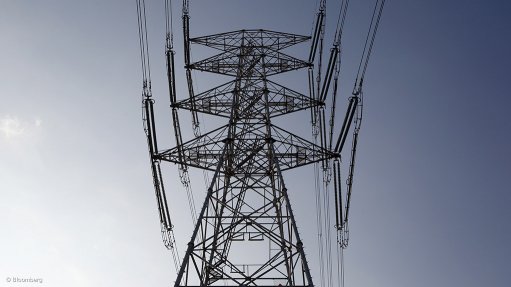
Photo by: Bloomberg
State-owned power utility Eskom noted on Tuesday that its renewable energy projects would contribute significantly to reducing power cuts, as these projects would assist in ensuring grid stability.
Speaking at the sixty-fourth Association of Municipal Electricity Distributors Convention, in Midrand, Eskom National Control Centre manager Al’louise van Deventer said, although what percentage exactly renewable energy would contribute to the grid would only be evident mid-year next year, the projects would have eased the strain on traditional power generation sources.
“Load-shedding is brought [about] by the instability of the grid where demand becomes higher than supply, and when this happens, power cuts are initiated to try and stabilise the grid,” she explained.
Van Deventer stressed the importance of the security of the national power grid and that, as a result, initiatives such as embarking on renewable energy projects were of importance to the utility.
“As we are still in the early stages of incorporating the power generated through both our wind farms and solar plant projects, the idea is for stability to be achieved between demand and supply. Renewable energy would assist us in achieving this mandate,” she indicated.
The country had experienced its first load-shedding in six years on March 6 this year, Van Deventer noted, adding that although South African citizens failed to understand the reason behind load-shedding, the impact of not employing load shedding would mean a shutdown of electricity across the country for two weeks.
Owing to this, Eskom continued to urge stakeholders to seek ways in which they could reduce the amount of electricity they consume.
City Power GM Stuart Webb stated during the convention that, having realised the challenge that Eskom was faced with, City Power implemented short-to-long term plans that would decrease the negative effects of load-shedding when it occured.
Being responsible for the supply of electricity in the City of Johannesburg, Webb mentioned that alternative interventions became critical to City Power to increase the availability of power on the Johannesburg grid.
“We have a 20-year power purchase agreement with the Kelvin power station, which commenced in 2001 that we are still committed to. This has helped us supply electricity to the City of Johannesburg,” he said.
Webb added that City Power had three gas turbines that could also be used to generate electricity as an alternative to Eskom’s supply.